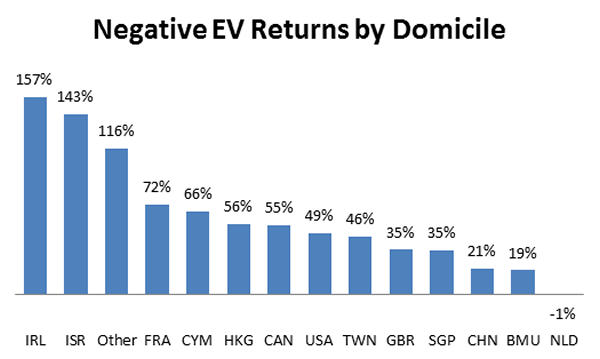Содержание

For example, a woman could be a secretary, but the idea of this woman becoming an office manager was unheard of. A pink collar job became the easy way to label all jobs done by primarily by women before the 1970s. While the women’s liberation did much to fight those stereotypes, some jobs are still predominantly female, such as teaching, clerical work, childcare, and nursing. Gold collar workers have traditionally been classified as white collar. Surgeons, engineers, anesthesiologists, lawyers, and airline pilots are all examples of gold collar workers.
Historically, blue-collar workers wore uniforms, usually blue, and worked in trade occupations. White-collar workers typically wore white, button-down shirts and worked in office settings. Other aspects that distinguish blue-collar and white-collar workers include earnings and education level. Under US Law, a pink-collar worker has a position that is traditionally filled by a woman.
Female Dominant Industries – The “pink collar job” definition is generally used to describe jobs held primarily by women. The terminology joins the ranks of “blue collar” jobs, which are typically labor- and service-oriented, and “white collar jobs,” which describes work often related to management roles or professional occupations. It can be frustrating to be defined by a demographic and labeled with a collar color, particularly as people of all genders, ages and ethnicities work across a wide range of occupations as contributing members of society.

It was found as well that men going into traditionally claimed pink collar jobs are felt discriminated and threatened in their jobs. Men going into positions such as teaching, nursing, and childcare faced many negative stereotypes in these lines of work, as men have traditionally been viewed as professional, strong, and holding dominant attitudes. You’ve probably heard the terms blue-collar job and a white-collar job. You know that white-collar is used to reference the white business shirts that people wear under their suits at their office jobs. Blue-collar is a clever way of referencing the blue jumpsuits that many people in the trades used to wear. You may be familiar with the terms “white collar” and “blue collar”—occupational classifications used simply to distinguish employees who perform manual labor from the office employees.
They are principally White Collar Workers either working part-time or are under employed. Under employed means that the person may be qualified with a specific degree but may be holding a job that does not require such high qualification. Some examples of Grey collar workers include; IT professionals, health care professionals, child care professionals and skilled technicians.
What is a White Collar Job?
The term “white-collar worker” was coined in the 1930s by Upton Sinclair, an American writer who referenced the word in connection to clerical, administrative and managerial functions during the 1930s. Instead, lower-level chefs are often considered blue-collar workers, and professional chefs are usually considered grey-collar workers. In fact, of the 145,115 chefs currently employed in the United States, only 25.8% are female.

Have you ever heard someone classify different occupations according to collar color and are confused by what it means? Here are the definitions for each type and what it means to fall under this occupation. Black-Collar Worker – is used to referring to workers in the mining or the oil industry.
How You’Re Destroying Your Career
With their smaller fingers, women were perceived to be better able to operate the new machines. By 1885, new methods of note-taking and the expanding scope of businesses led office-clerk positions to be in high demand. Having a secretary became a status symbol, and these new types of positions were relatively well paid. In addition, women gradually became more involved with church activities and came to take on more leadership roles in various religious societies. The women who joined these societies worked with their members, some of whom were full-time teachers, nurses, missionaries, and social workers to accomplish their leadership tasks.
In the early 1900s women’s pay was one to three dollars a week and much of that went to living expenses. In the 1900s female tobacco strippers earned five dollars a week, half of what their male coworkers made and seamstresses made six to seven dollars a week compared to a cutter’s salary of $16. This differed from women working in factories in the 1900s as they were paid by the piece, not receiving a fixed weekly wage. Those that were pinching pennies pushed themselves to produce more product so that they earned more money. Women who earned enough to live on found it impossible to keep their salary rate from being reduced because bosses often made “mistakes” in computing a worker’s piece rate.

Gold collar jobs involve positions that have recently become essential enough to business operations that they warranted their own new classification. White-collar jobs typically are higher-paid, higher-skilled jobs that require more education and training than low-skilled or manual work. Examples may include managerial roles or professions like doctors or lawyers. White-collar workers and jobs are often portrayed in contrast to blue-collar work, insinuating a stratification of the working class. Grey collar refers to the balance of employed people not classified as white or blue.
Is Bill Clinton’S Career Over After Interview
This article will help you understand the most popular types, its definition, and what it means to fall under each category. This is occurring in part because many men in blue-collar jobs found themselves on the unemployment line when the recession began in 2008. Originally, the term pink-collar workers didn’t appear until the 1970s when author, Louise Kapp Howe, used it as a way to focus on social issues. She was primarily referring to nurses, secretaries, and teachers at the time.
- The “pink collar job” definition is generally used to describe jobs held primarily by women.
- Under United States Law, a pink-collar worker has a position that is traditionally filled by a woman.
- The terminology, however, came into play after World War II as a way to differentiate what were, at the time, considered “skilled” or “unskilled” professions.
- This may include jobs in the beauty industry, nursing, social work, teaching, secretarial work, or child care.
- Back in the 1920s, women were expected to be daughters, wives, and mothers while men were expected to be the breadwinner of their family.
- We are required to have YEARS of specialized training and at least 2 higher education degrees.
Paid Online Questionnaires, Content Writing, Search Marketing are all examples of Wirk. Barbara Ehrenreich occasionally refers to pink collar work in her book “Bait and Switch.” Often called a “green job,” it covers occupations that handle the conservation and sustainability of the environment. This segment is the “gray area” of job segmentation as it is used as the neutral title to several posts, though some use it as a term for people in the information technology sector.
WHITE, BLUE, PINK OR GREY: WHAT COLOUR COLLAR ARE YOU? | COLLAR JOBS
The catch is that these pink collar job definition are still traditionally held by women. This kind of segregation will have negative impact in the long run because caregivers get paid much less than blue-collar and white-collar workers, who often get unionized wages. This may include jobs in the beauty industry, nursing, social work, teaching, secretarial work, or child care. In recent years, data from the Bureau of Labor Statistics show that the top six pink collar jobs largely center around the childcare and healthcare industries. A blue-collared job is defined by the manual labor required, meaning it focuses more on the worker’s physical capability than their mind, so the educational requirement of a blue-collared worker is relatively low.
We are required to have YEARS of specialized training and at least 2 higher education degrees. Grey collar – Workforce that is not classified in blue collar nor white collar. It is occasionally used to describe elderly individuals working beyond the age of retirement, as well as those occupations incorporating elements of both blue- and white-collar.
These are the people who may have actually worn pink collars at some point. The support staff of dental hygienists and assistants are pink-collar jobs because they do more patient interaction, earn less, and go to school for a shorter period of time. So, does the idea of working with people and possibly helping them feel better, live better lives, or be happier, healthier, and better-educated appeal to you? Although female employees did not receive equal pay, they did get sabbaticals to attend university and to travel for their professions at the cost of the AGS. Those women working managerial and library or museums positions made an impact on women in the work force, but still encountered discrimination when they tried to advance.
Some employees need to do manual labor; some handle tons of paperwork; others are assigned to do fieldwork; and then there are freelancers who are occasionally included in the payroll. Popped-Collar Worker – If you come from a rich family but take 9-5 jobs for character building, you are among these popped collar workers. The collar also refers to young people who usually work at clubs, in stocks, or other fancy jobs. It is a salaried professional, typically referring to general office workers and management.
Howard Miller who created this poster as an inspirational image to boost female worker morale. In these factories, workers frequently breathed dangerous fumes and worked with flammable materials. In order for factories to save money, women were required to clean and adjust the machines while they were running, which resulted in accidents where women lost their fingers or hands. Many women who worked in the factories earned meager wages for working long hours in unsafe conditions and as a result lived in poverty.
Many https://1investing.in/ had furthered their education deriving a sense of self-worth. In the 1940s, clerical work expanded to occupy the largest number of women employees, this field diversified as it moved into commercial service. The average worker in the 1940s was over 35 years old, married, and needed to work to keep their families afloat. Throughout the 20th century, women such as Emily Balch, Jane Addams, and Lillian Wald were advocates for evolving the roles of women in America. These women created settlement houses and launched missions in overcrowded squalid immigrant neighborhoods to offer social services to women and children.
